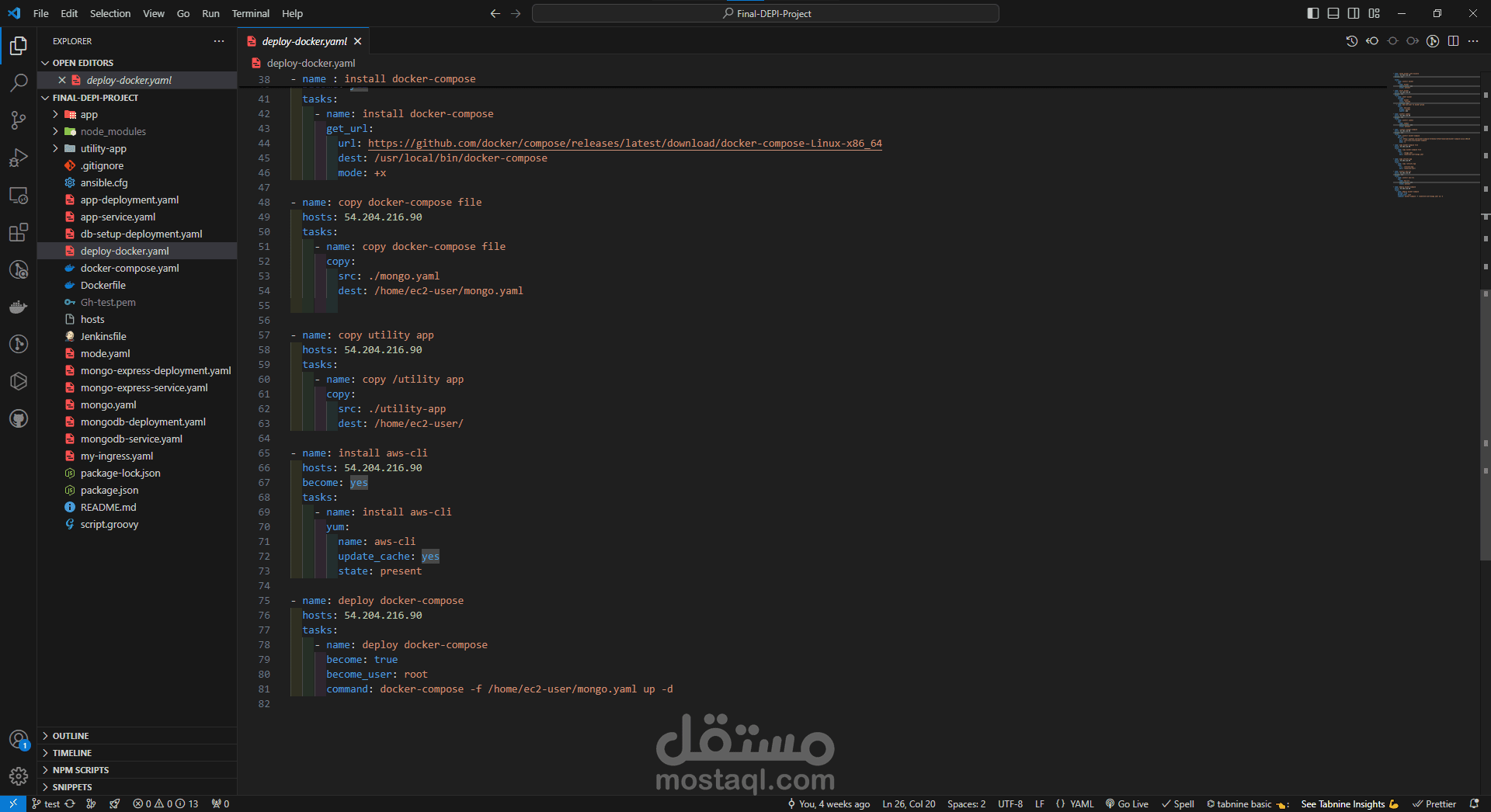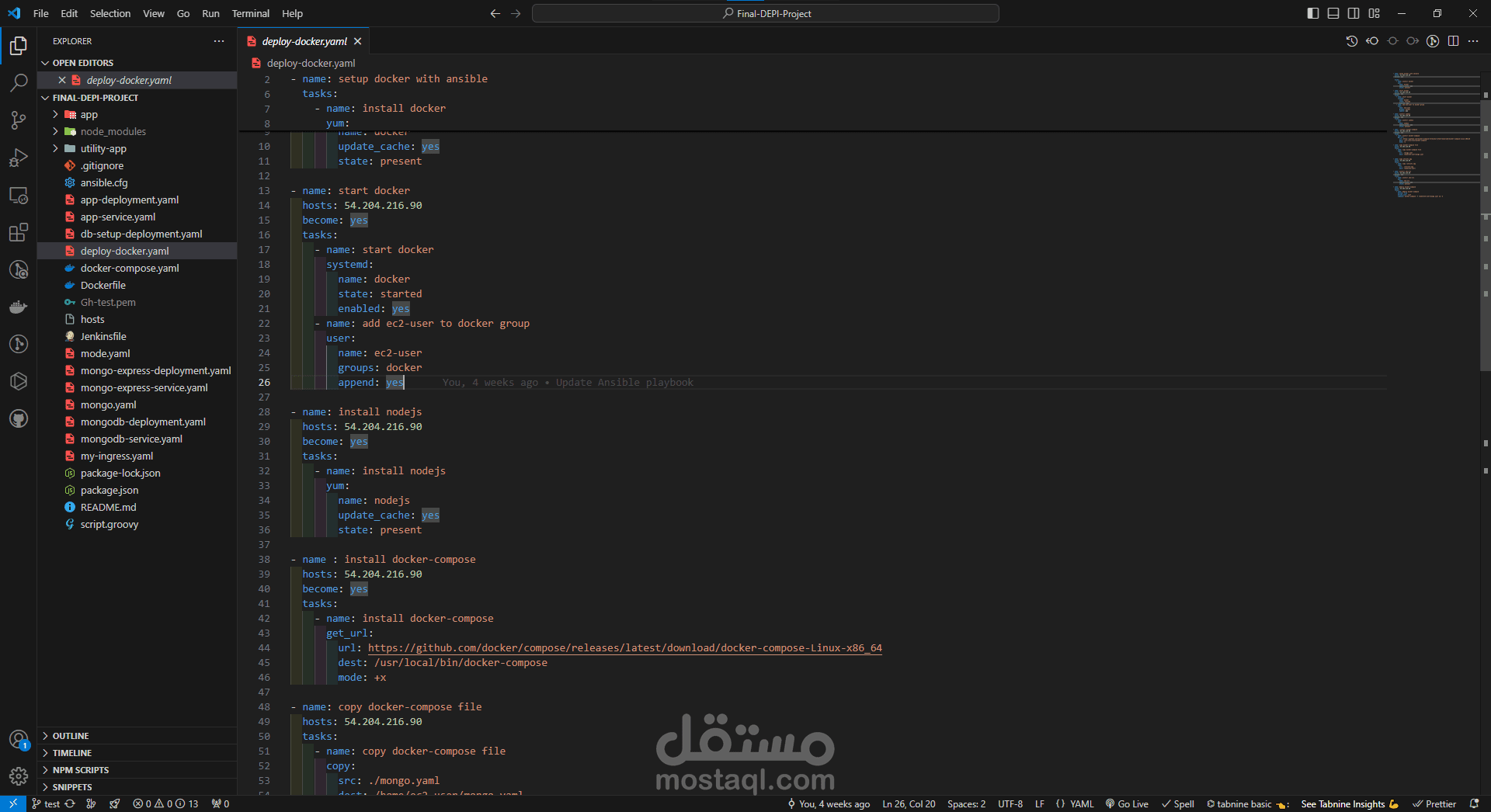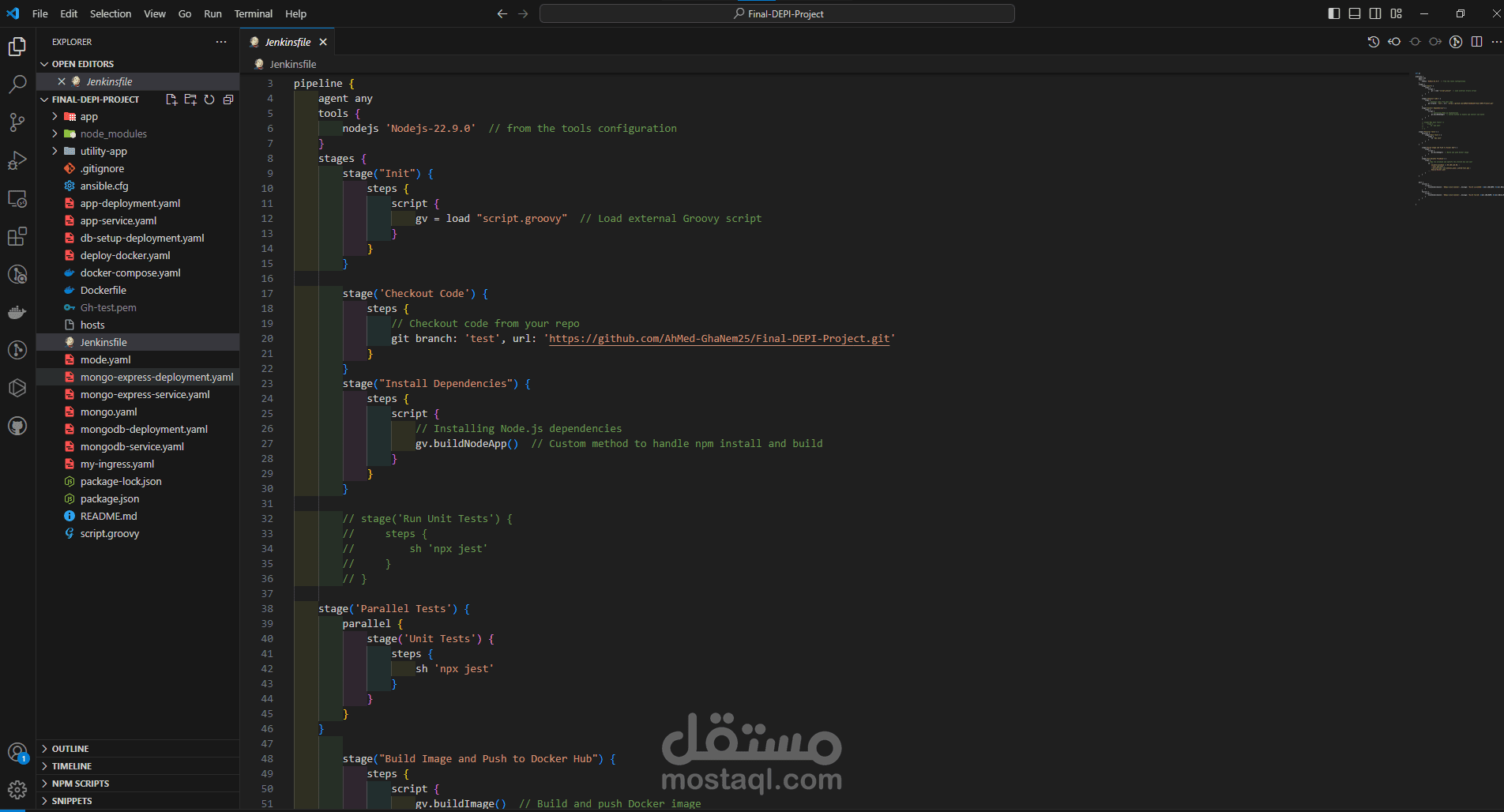Automated Deployment Pipeline with Jenkins and Docker
تفاصيل العمل
An Automated Deployment Pipeline is a crucial component of modern software development, designed to streamline and automate the processes of building, testing, and deploying applications. The primary goal of this pipeline is to enable rapid and reliable delivery of software by minimizing manual intervention and reducing the likelihood of errors.
The pipeline consists of several key stages:
1.Source Code Management: The process begins with developers committing code changes to a version control system, such as Git. These changes are automatically tracked, allowing teams to collaborate efficiently and maintain a history of modifications.
2.Continuous Integration (CI): Upon committing code, the CI server (Jenkins) is triggered to build the application. This includes compiling the code and running automated tests (unit tests, integration tests) to ensure that the changes do not introduce new bugs. The CI process ensures that every code change is verified before it is merged into the main codebase.
3.Containerization: Once the code is successfully built and tested, it is packaged into a Docker container. This encapsulation ensures that the application runs consistently across different environments by including all necessary dependencies and configurations.
4.Configuration Management: Using tools like Ansible, the pipeline automates the provisioning and configuration of infrastructure. Ansible playbooks are utilized to set up the required environments, install necessary software, and deploy the Docker containers to the target servers.
5.Continuous Deployment (CD): After successful testing and configuration, the application is automatically deployed to the production environment. This ensures that new features, enhancements, or fixes are delivered to users quickly and consistently. The deployment process is monitored to ensure that any issues can be quickly identified and resolved.
6.Monitoring and Feedback: Post-deployment, the application is continuously monitored for performance and reliability. Metrics and logs are collected to provide feedback on the deployment, allowing for rapid identification of any potential issues.
By implementing an automated deployment pipeline, organizations can achieve faster release cycles, improved software quality, and a more efficient development process. This approach not only enhances team productivity but also allows businesses to respond swiftly to changing market demands and user feedback.




